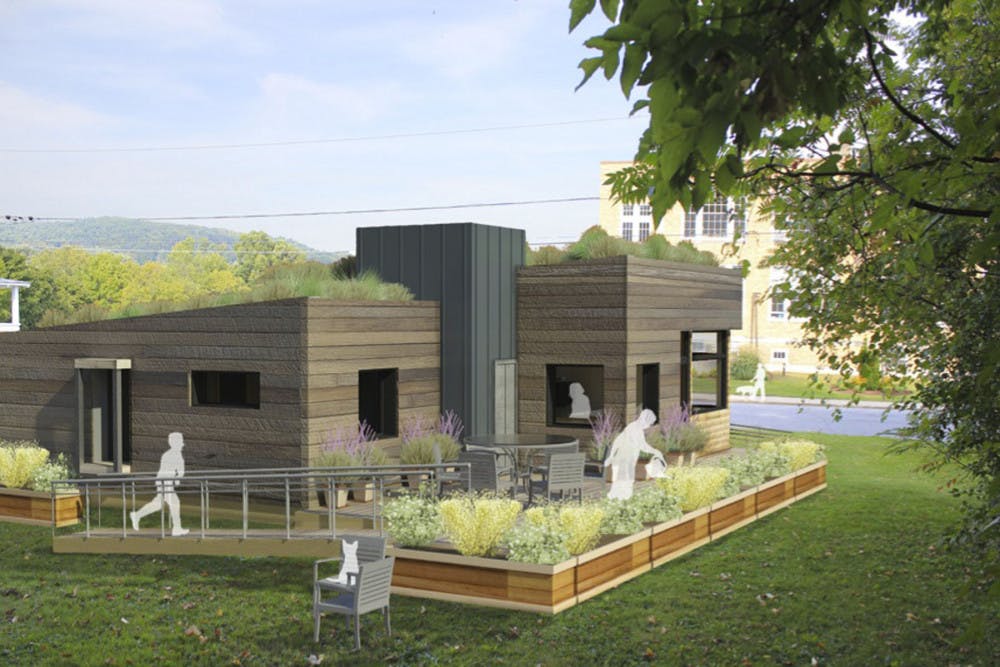For the members of this year’s Solar Decathlon team, designing a home is not an exercise in engineering or architecture but a reflection of a community’s values. InSite, this year’s submission to the Department of Energy’s biennial competition, aims to foster communal spirit through their sustainably designed home.
“I think it’s just been interesting that instead of thinking about the design first ... the students on the team thought about the concepts and they said we’re not just thinking about about the house,” said Project Coordinator Gwen Cook ’13. “We’re thinking beyond that [while asking ourselves] what are the things we see in society that we want to change, and how can we then use the house to do that?”
The group has integrated their emphasis on strong community into their design. Their Five Points of InSiteful architecture outline the essential components of community-oriented design. These points include condensing energy networks, staying close to home, emphasizing public areas, celebrating nature in all contexts, utilizing street space and supporting a cooperative atmosphere.
One essential decision that advanced this goal, according to Cordelia Newbury ’13, was sacrificing the size of individual space for a larger common space, forcing the inhabitants out of solitude in their private rooms and into a shared location.
Another important goal was locating the building within walking distance of highly-frequented places, according to Newbury, reducing the residence’s dependence on cars and making it easier for individuals to interact with the outdoors.
A large window in front diminishes the traditional barrier between street and house, enhancing the outdoors’ visibility inside the home.
Yet amongst the team’s most prized inventions is their solar path, making them the first team in Solar Decathlon history to place solar panels away from the main house. Solar energy will instead travel through a solar path that will also serve as a physical walkway. According to Cook, this innovation fosters walkability, aesthetics and sustainability.
While team members expressed pride in their design, many also noted upcoming concerns.
Construction began on Jan. 18. One of the team’s most difficult struggles — transporting the home from Vermont to Irvine, Calif. — has yet to come. For this task, the group paneled the home and organized railway transportation.
Cook expressed concerns over the College’s lack of an engineering department, which could lead other teams to have a comparatively more innovative approach in that field.
According to Construction Manager Kate Eiseman ’15, this group has dealt with prior challenges well.
“Innovation is born within constraints ... we find that the best pieces of our house and the design are coming from the challenges,” said Eisman. Visiting Lecturer in Architecture Andrea K. Murray, the Solar Decathalon faculty adviser, believes that Middlebury’s liberal arts curriculum, while excluding an engineering department, provides the group with a unique advantage.
“I think our most unique trait is that we’re a liberal arts school ... I see it as a huge advantage because we approach each problem from a multidisciplinary perspective,” said Murray.
Cook believes this group is effective in collaborating their various specialties.
“This time around I think it is a much more organic, larger group of students who have all come together and are working jointly. It’s a very collaborative and democratic process which can be frustrating at times but it’s exciting to have everyone making decisions together,” said Cook.
Newbury says the group’s success is more rewarding than a traditional assignment in which the highest honor is an A grade. The end result of this project is something tangible and useful.
Participants expressed gratification in a conviction that the values they spread are important. “I think the competition is about changing the way we relate to space and changing the cultural expectations about how we live,” said Eisman.
InSite Design Draws from Campus Culture

Comments


